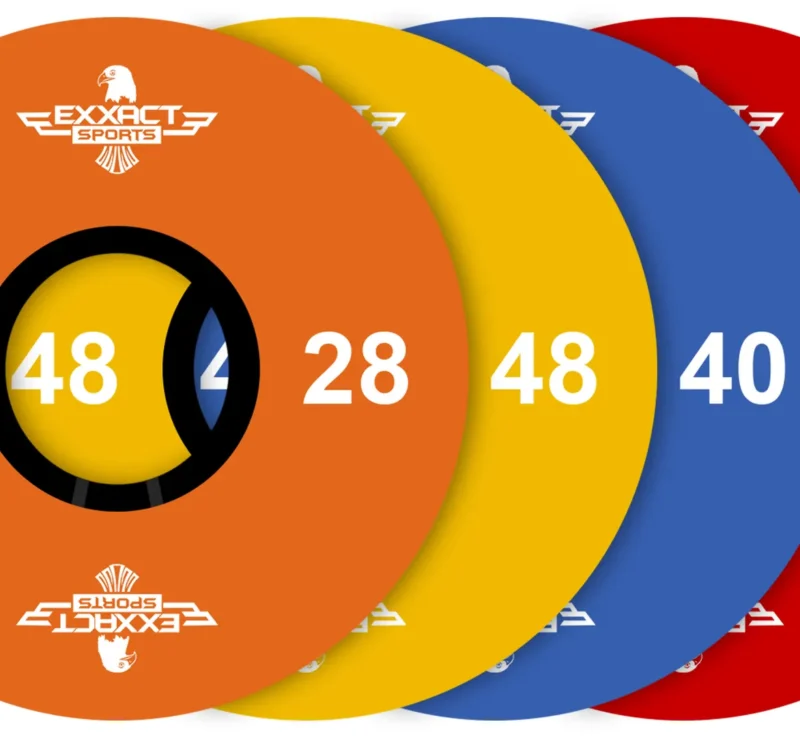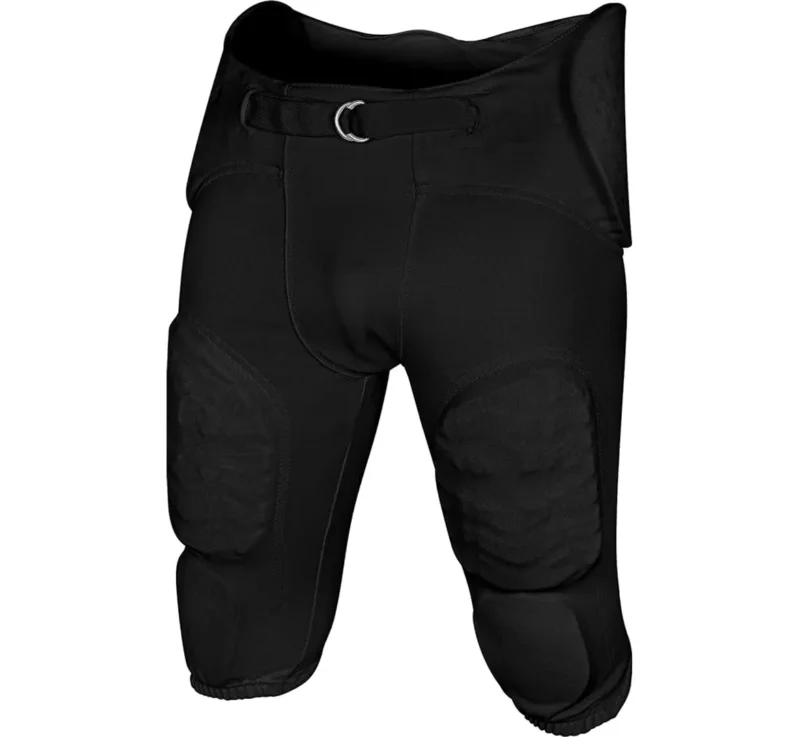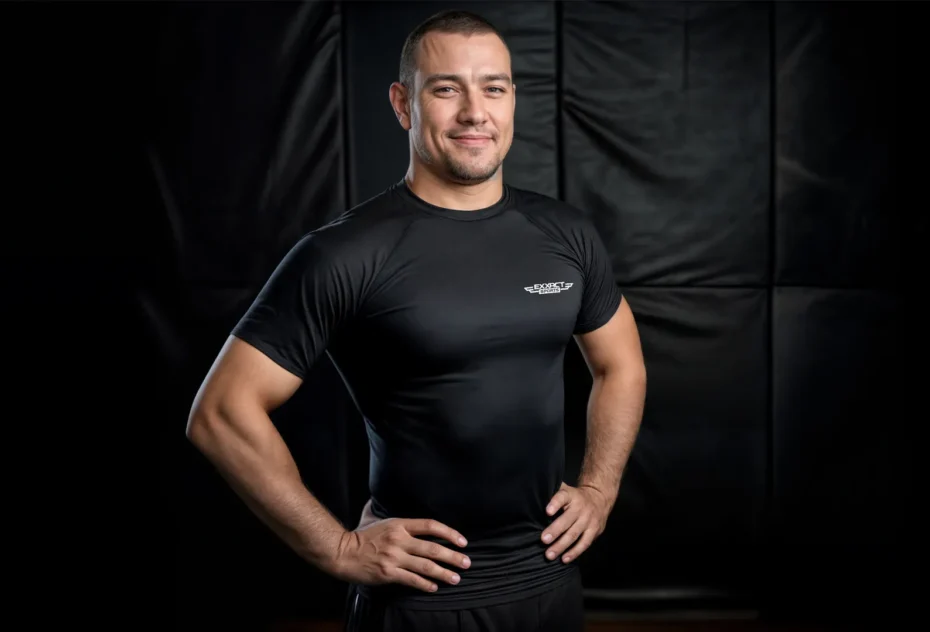In the dynamic world of football, every play is a testament to the combination of skill, strategy, and athleticism. Among the many tools and techniques that help players elevate their game, one stands out for its multifaceted benefits: the tackle wheel. This versatile training aid is more than just a prop; it’s a gateway to enhancing tackling skills, building overall athletic performance, and ensuring safety on the field.
This article dives deep into the science behind the tackle wheel, exploring how it can transform players’ abilities. We’ll delve into the various benefits it offers, detail effective drills and variations to incorporate into training, and emphasize the importance of safety and proper technique. By the end, you’ll understand why the tackle wheel is an indispensable asset for any football player looking to reach new heights.
The art of the tackle
Tackling is a fundamental skill in football that requires a combination of strength, speed, and accuracy. It’s not just about making contact; it’s about executing a precise, powerful, and safe maneuver that can turn the tide of a game. Whether you’re a linebacker aiming to halt a running back in their tracks or a defensive back looking to bring down a wide receiver, mastering the art of the tackle is crucial.
Enter the tackle wheel, a versatile training tool that can help players develop all of these attributes. The tackle wheel is designed to simulate the dynamics of a real tackle, allowing players to practice their technique repetitively and effectively. When used correctly, the tackle wheel can help players learn how to wrap up opponents, drive through contact, and bring them to the ground. This isn’t just about brute force; it’s about learning to harness your strength and apply it with precision.
Moreover, the tackle wheel offers benefits that extend beyond just improving tackling technique. It can also help players develop core strength, agility, and balance. The act of pushing and maneuvering the wheel engages multiple muscle groups, enhancing overall body control and stability. This holistic approach to training ensures that players are not only better tacklers but also more well-rounded athletes.
In addition, the tackle wheel promotes safety by allowing players to practice tackling techniques without the risk of injury that comes with live contact. This is especially important in a sport where injuries are a common concern. By refining their technique on the tackle wheel, players can minimize the risk of both giving and receiving injuries during games.
As a result, the tackle wheel is an essential piece of equipment for any football player looking to improve their game. Whether you’re a seasoned veteran or a rising star, incorporating the tackle wheel into your training regimen can help you take your skills to the next level. It’s not just a tool; it’s a pathway to becoming a more effective, efficient, and safer player on the field.
Tackle wheel benefits
The tackle wheel is more than just a training tool; it is a comprehensive solution for enhancing various aspects of a football player’s performance. One of the primary benefits of incorporating the tackle wheel into training regimens is its ability to significantly develop lower body muscular strength. By engaging the glutes, hamstrings, and quadriceps, the tackle wheel ensures that players are prepared for the physical demands of the game. This targeted muscle development translates into more powerful tackles and better overall performance on the field.
Beyond lower body strength, the tackle wheel plays a crucial role in enhancing core stability and rotational power. These elements are essential for dynamic movements, enabling players to maintain control and generate force during tackles. The wheel’s design encourages players to engage their core muscles, improving their ability to twist and turn effectively. This increased core stability and rotational power not only enhance tackling but also contribute to better overall athleticism, making players more versatile and adaptable on the field.
The tackle wheel is also instrumental in improving balance and coordination, which are vital for maintaining control during tackles. By simulating the physical act of tackling, the wheel helps players develop the necessary balance to stay upright and in control, even in challenging situations. This improved balance and coordination are key to preventing injuries and executing successful tackles. Additionally, the tackle wheel enhances agility and quickness, allowing players to respond rapidly to game situations. This increased agility ensures that players can quickly change direction and react to opponents’ movements, making them more effective on the field.
Finally, the tackle wheel is an invaluable tool for mastering proper tackling technique and form. By providing a safe and controlled environment to practice tackling, the wheel helps players develop the correct techniques for wrapping up opponents and driving through contact. This focus on proper form ensures that players can execute effective and safe tackles, reducing the risk of injury to both themselves and their opponents. The tackle wheel’s ability to promote proper technique makes it an indispensable asset for both experienced and aspiring football players aiming to elevate their game.
Tackle wheel drills
Incorporating the tackle wheel into football training begins with a structured approach that ensures athletes are well-prepared and safe. It is crucial to start with foundational bodyweight exercises as a warm-up. These exercises not only prepare the muscles for more intense drills but also help prevent injuries by ensuring the body is adequately conditioned. Simple yet effective bodyweight exercises such as lunges, squats, and planks can be integrated to activate core muscle groups and improve overall body control.
Once athletes are properly warmed up, the intensity of the tackle wheel drills can be increased by adding resistance through bands or weights. This additional resistance enhances strength and endurance, which are vital for effective tackling. Proper form and technique are paramount during these drills. Athletes should focus on maintaining a strong foundation, driving through their hips, and keeping their head up to avoid neck and spinal injuries. Coaches and trainers should provide clear instructions and monitor athletes closely to ensure drills are executed safely and effectively.
Variety is a key component in making the most of tackle wheel drills. Different drills can be designed to target specific aspects of tackling, such as speed, power, and agility. For instance, quick-reaction drills can help improve an athlete’s ability to change direction rapidly, which is crucial in dynamic game situations. Power drills, on the other hand, focus on generating force quickly, essential for driving through contact. Agility drills can involve quick footwork and changes in direction, enhancing an athlete’s ability to react swiftly to opponents. This comprehensive approach underscores the tackle wheel’s versatility in improving multiple facets of athletic performance.
Finally, it is important to integrate the tackle wheel into a broader training program. Combining tackle wheel drills with other exercises and drills creates a well-rounded regimen that enhances overall athletic ability. For example, incorporating sprints and plyometric exercises alongside tackle wheel drills can improve explosiveness and reaction time. This holistic approach ensures that athletes develop a balanced skill set, making them better prepared for the unpredictable nature of football games. By focusing on proper technique, variety, and integration, athletes can maximize the benefits of the tackle wheel and elevate their game to new heights.

Tackle wheel variations
The tackle wheel is an incredibly versatile training tool, offering a multitude of variations to keep practices dynamic and effective. One of the simplest ways to modify the challenge is by adjusting the distance between the player and the tackle wheel. Starting closer to the wheel can help beginners build confidence and perfect their form, while increasing the distance adds complexity, forcing players to accelerate and engage quickly. This variation is particularly useful for honing explosive speed and reaction time, crucial for in-game scenarios.
Another effective modification involves changing the starting position of the player. For instance, beginning from a standing position is ideal for practicing standard tackles, while starting from a kneeling or lying-down position can simulate more challenging game situations. These variations not only build different muscle groups but also enhance the player’s ability to react and adapt to unexpected conditions on the field. Additionally, incorporating obstacles such as cones or hurdles can further elevate the drill by improving agility and footwork. Players must navigate these obstacles before making contact with the tackle wheel, mimicking the unpredictable nature of a live game.
Varying the speed of the tackle wheel is another powerful technique to keep training sessions engaging and productive. Slower speeds allow players to focus on perfecting their technique, while higher speeds test their reaction time and quick decision-making skills. This approach is especially beneficial for training against fast-paced offenses, where quick reflexes and accurate tackling are essential. Moreover, practicing tackles from different angles ensures well-rounded defensive capabilities. By simulating tackles from the side, back, or front, players can develop the versatility needed to excel in various game situations. This comprehensive training approach not only enhances overall athletic performance but also prepares players for the diverse challenges they will face on the field.
Safety first
When incorporating any new training tool into a regimen, safety should always be the top priority. The tackle wheel is no exception. To ensure that athletes can reap the full benefits of this versatile tool without risking injury, several essential precautions must be taken. First and foremost, having a spotter present during training sessions is crucial. A spotter can provide immediate feedback on technique, correct any improper form, and intervene if necessary to prevent accidents. This added layer of supervision helps maintain a safe and effective training environment.
Wearing appropriate protective gear is another non-negotiable aspect of safe tackle wheel use. Helmets, mouthguards, and eye protection are essential for minimizing the risk of injury. These pieces of equipment not only protect the athlete but also provide peace of mind, allowing for a more focused and confident training session. Additionally, it is advisable to start with low-intensity workouts and gradually increase the difficulty and duration. This progressive approach allows the body to adapt to the new demands, reducing the likelihood of strain or injury. Proper form and technique are equally important; athletes should focus on maintaining correct posture and executing movements accurately to avoid placing undue stress on the body.
Listening to one’s body is perhaps the most critical safety measure. Athletes should be attuned to any signs of discomfort or pain and should not hesitate to stop immediately if something does not feel right. Pushing through pain can lead to serious injury, setting back training progress and potentially causing long-term damage. By prioritizing these safety guidelines, athletes can maximize the benefits of the tackle wheel while minimizing the risks, ensuring a productive and injury-free training experience.

Conclusion
In the vast array of football training tools, the tackle wheel stands out as a comprehensive and indispensable asset. Its versatility allows players to hone their tackling skills with a precision that translates directly to game performance. By simulating real-world tackling scenarios, the tackle wheel helps players develop the strength, speed, and accuracy necessary to excel on the field. This consistent practice not only refines tackling techniques but also fortifies core strength, agility, and balance—essential components of overall athleticism.
Moreover, the tackle wheel’s impact extends beyond just tackling. It enhances a player’s overall physical prowess by engaging multiple muscle groups, improving coordination, and sharpening agility. This holistic development is crucial for any football player aiming to elevate their game. The tackle wheel also serves as a cornerstone for safer training practices, allowing players to perfect their techniques without the risk of injury that comes with live contact. This safety aspect is invaluable, as it ensures that players can focus on skill development without compromising their health.
Incorporating the tackle wheel into regular training regimens is not just a recommendation; it is a strategic move that can give players a competitive edge. The tackle wheel’s ability to mimic real game situations while promoting safer, more effective training methods makes it an essential piece of equipment for both seasoned professionals and aspiring athletes. As players continue to use the tackle wheel, they will notice significant improvements in their tackling abilities and overall athletic performance, ultimately setting them on a path to greater success on the field.













